Mold Remediation Photo Gallery
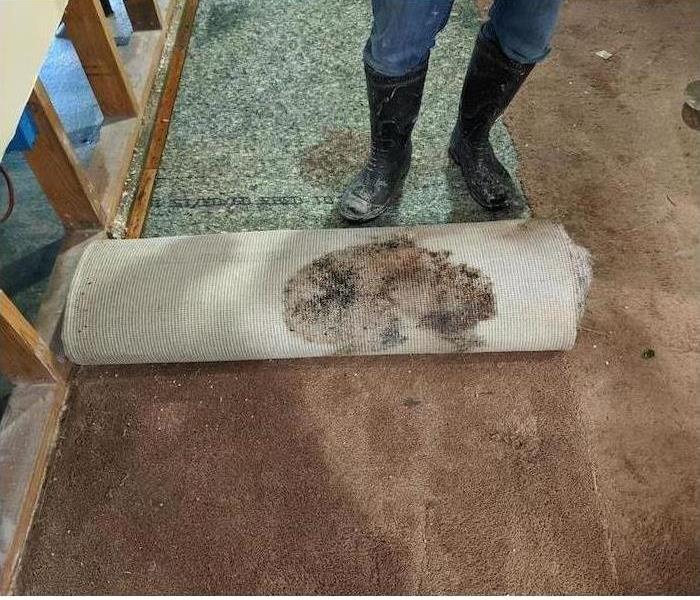
Mold is an After Effect of Storm Damage
Concrete slab is infamous for absorbing moisture after water damage and a secondary issue after storm damage can crop up as a mold infestation on this carpet. SERVPRO techs removed the carpet, dried the substrate and treated the area with antimicrobial cleaning agents.
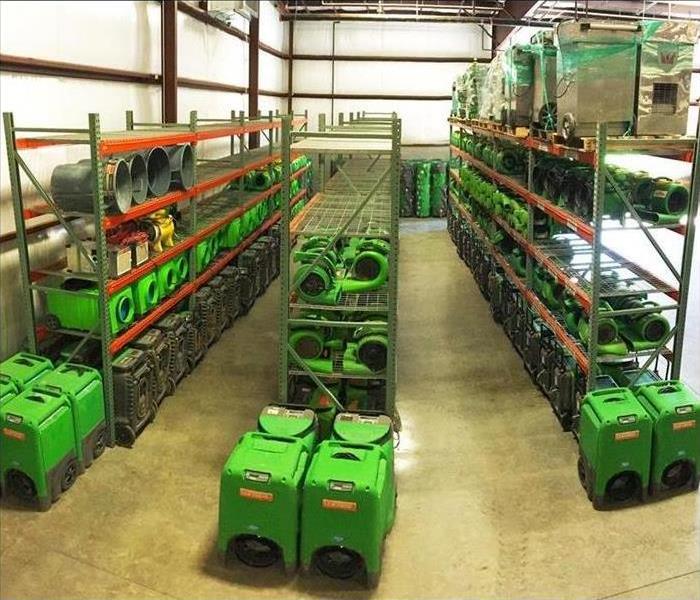
Hiding In The Corner
Even a slow leak can cause more damage than you would expect. The storage room seen here had just that located in the shadows of the room where no one noticed for days. Luckily for them, because it was all located on a single panel it was simple to remove and replace.
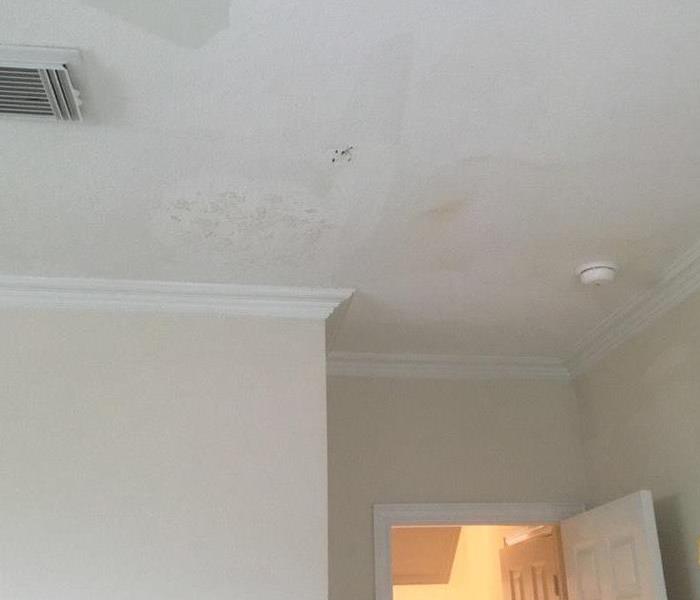
Mildew On The Ceiling
See the little splotches on the ceiling? That is growing mildew from a busted pipe in the bathroom above. The family here let it sit for the weekend before calling SERVPRO and it had already begun to show signs of fungal growth. Once it reaches this stage the drywall needs to be removed and replaced. This is why it is crucial that if there is ever a water leak in your home you need to call SERVPRO right away!
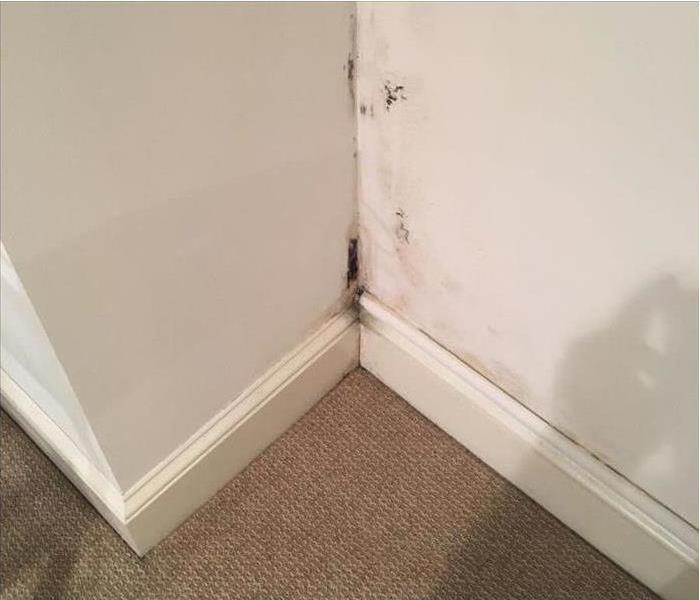
Mold In Crevasse
Mold likes to take hold in small, dim, damp places. The corner seen here has retained moisture from a pipe leak and sprouted mold. You can even see where it has followed the water line down the length of the trim.
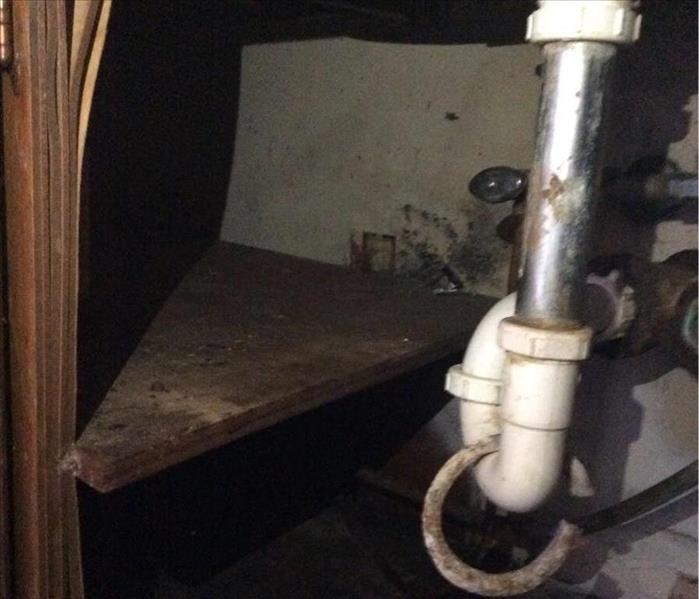
Mold Under Sink
If you have a slow drip from the bottom of your faucet, that is all the moisture you need to establish a breeding ground for mold. It only takes 48 hours for mold to begin growing so its recommended to get all leaks fixed as soon as possible.
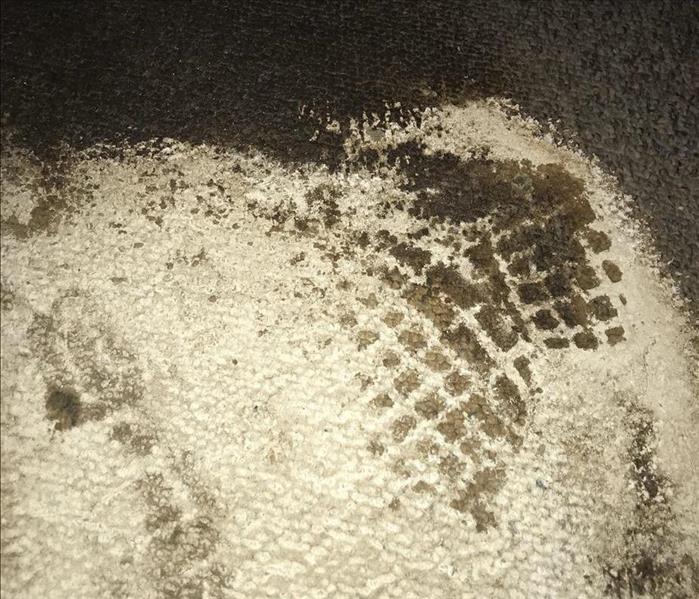
Moldy Carpet
Left to soak in water, if not dried properly and immediately, carpet is an excellent home source for mold growth. The mixture of dirt tracked in from the outside and the warm environment makes for a perfect moldy jungle.
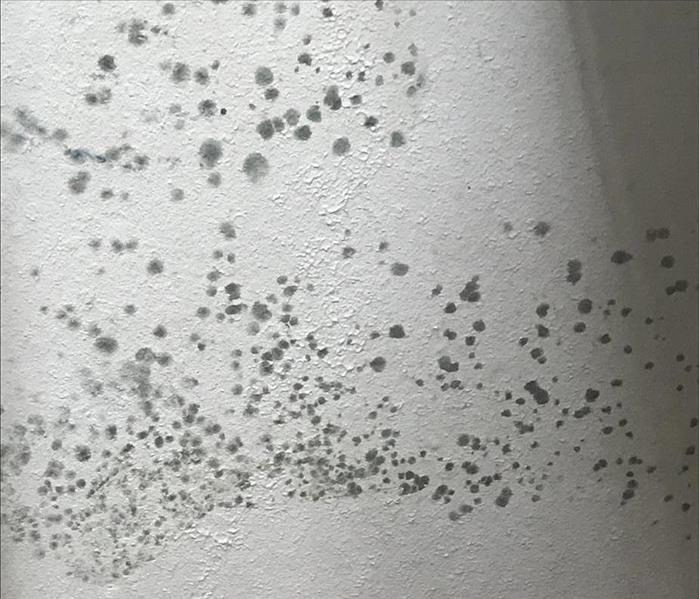
Interior Mold
When your home has experienced a large water damaged and left to soak for a decent period of time mold may begin to grow in the insulation between the walls. If left untreated it will begin to produce a foul smell and grow on the outer side of the drywall.




 24/7 Emergency Service
24/7 Emergency Service